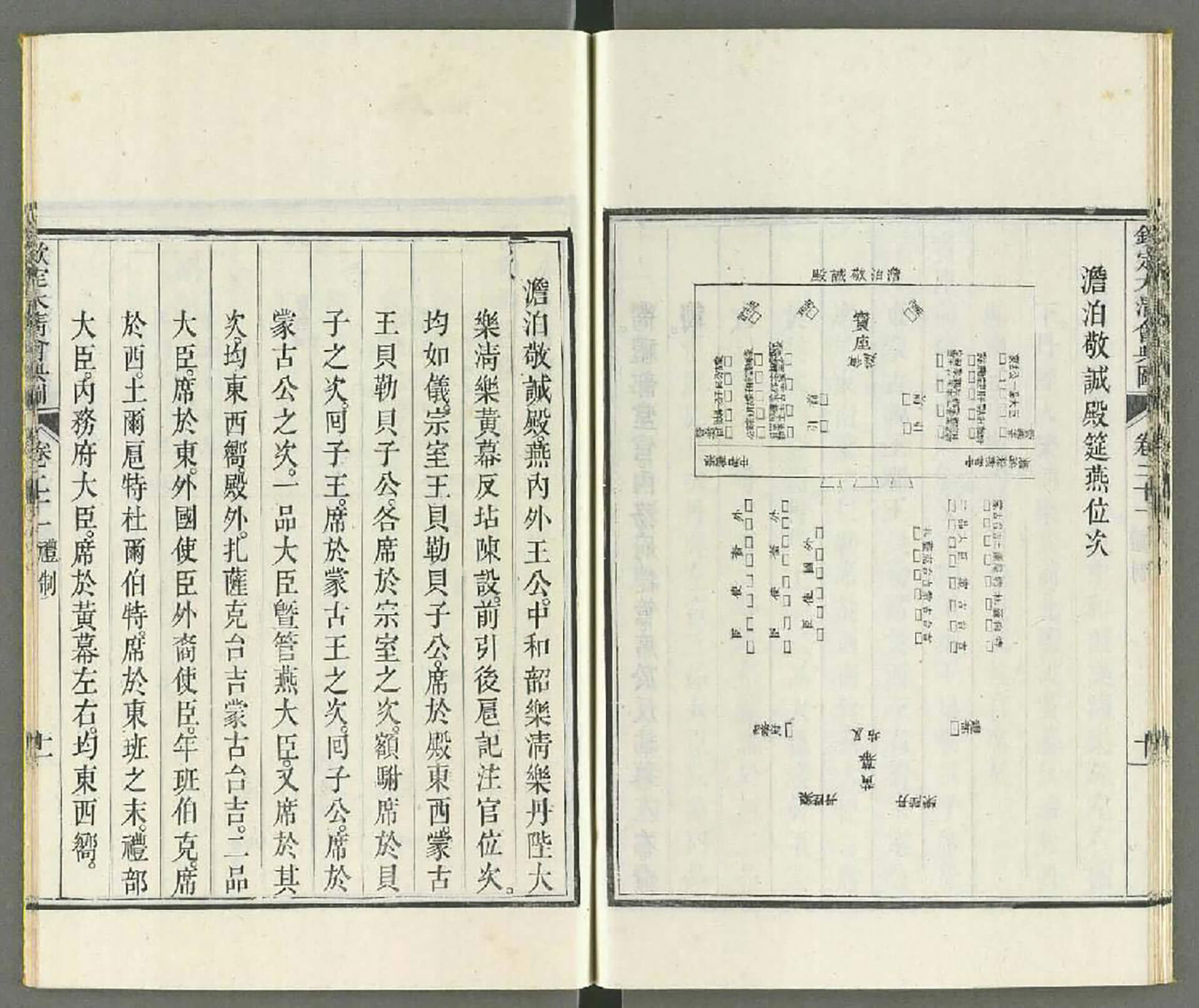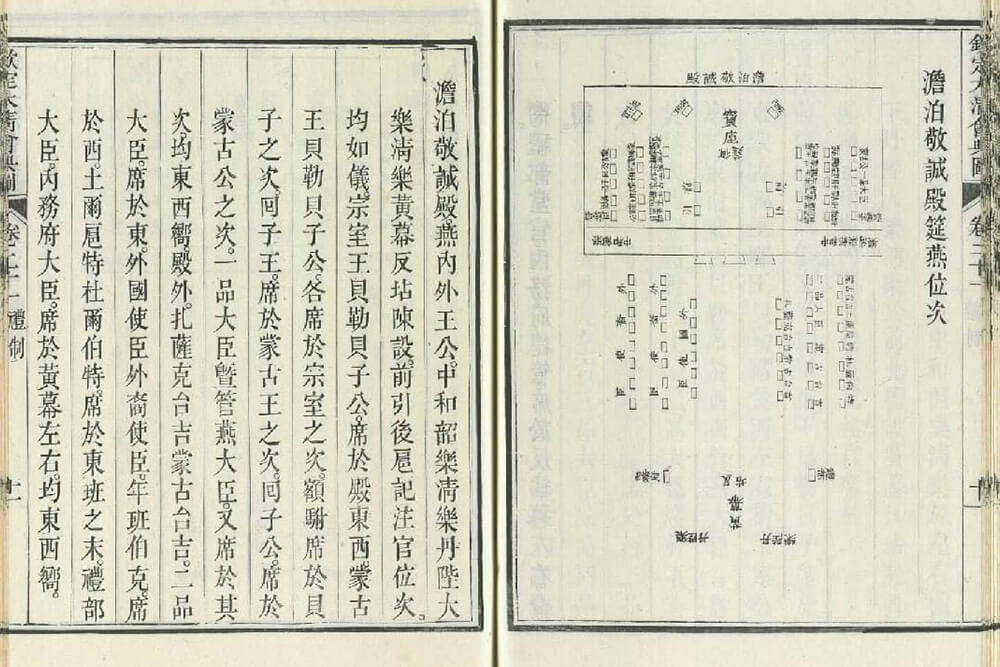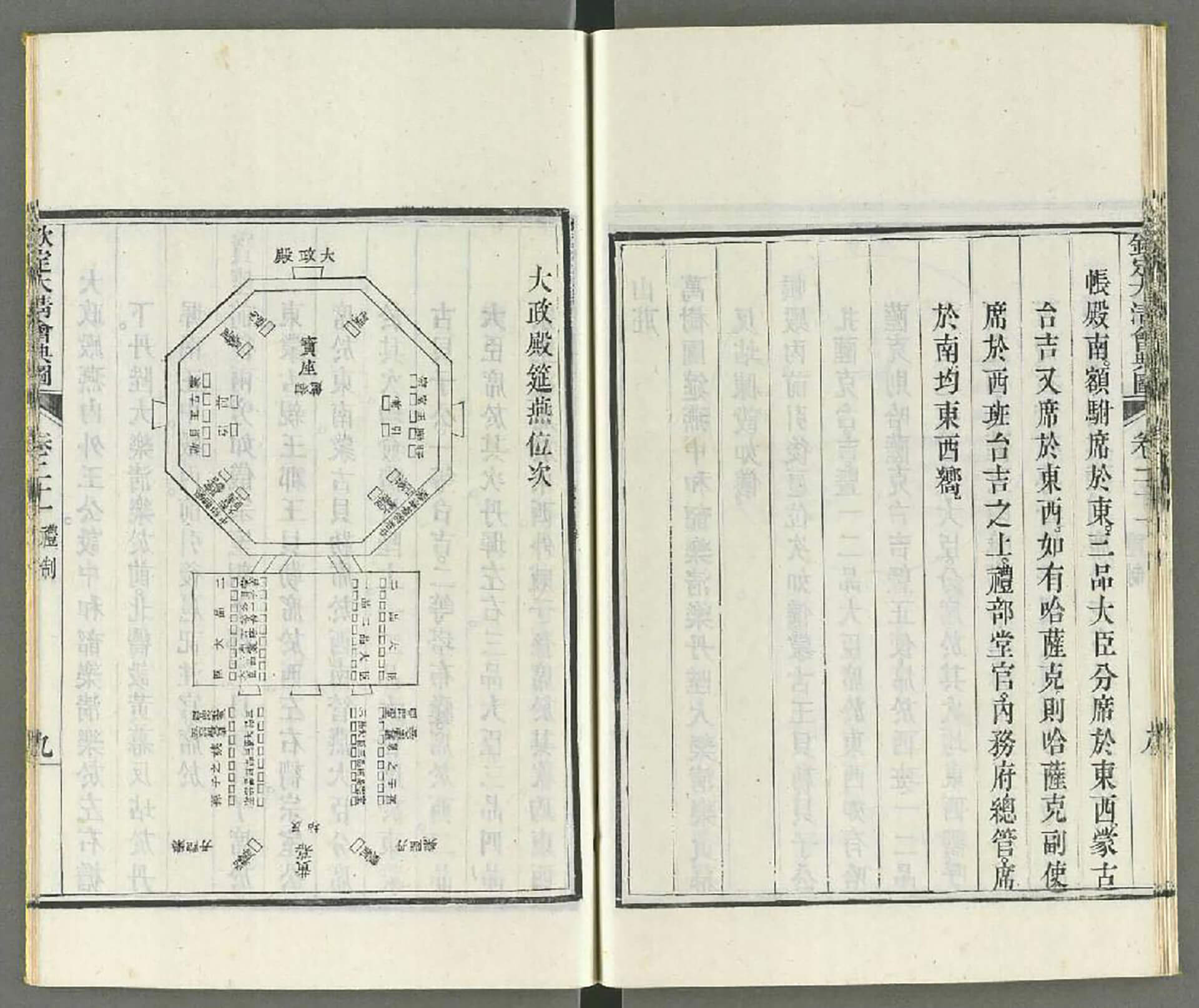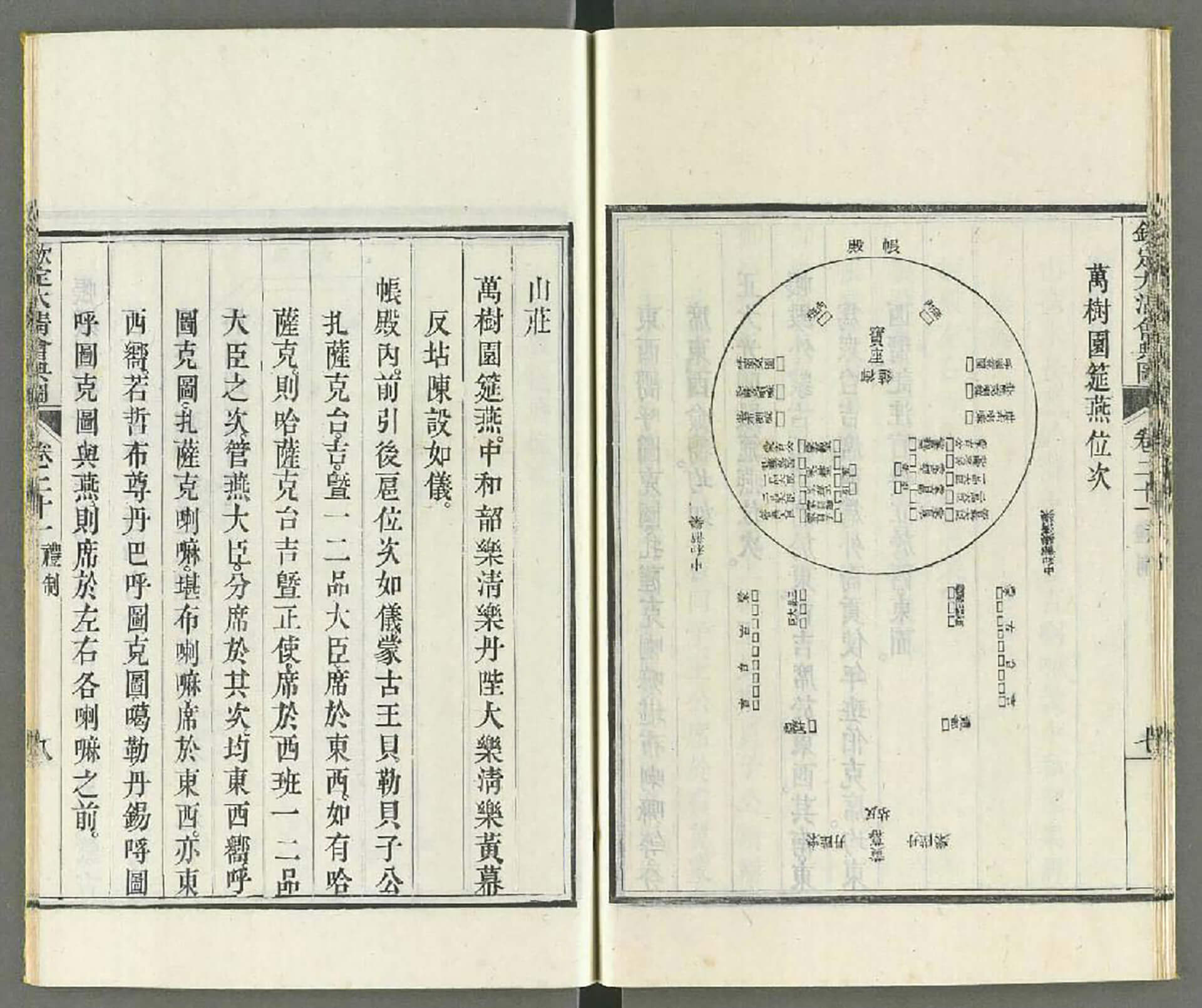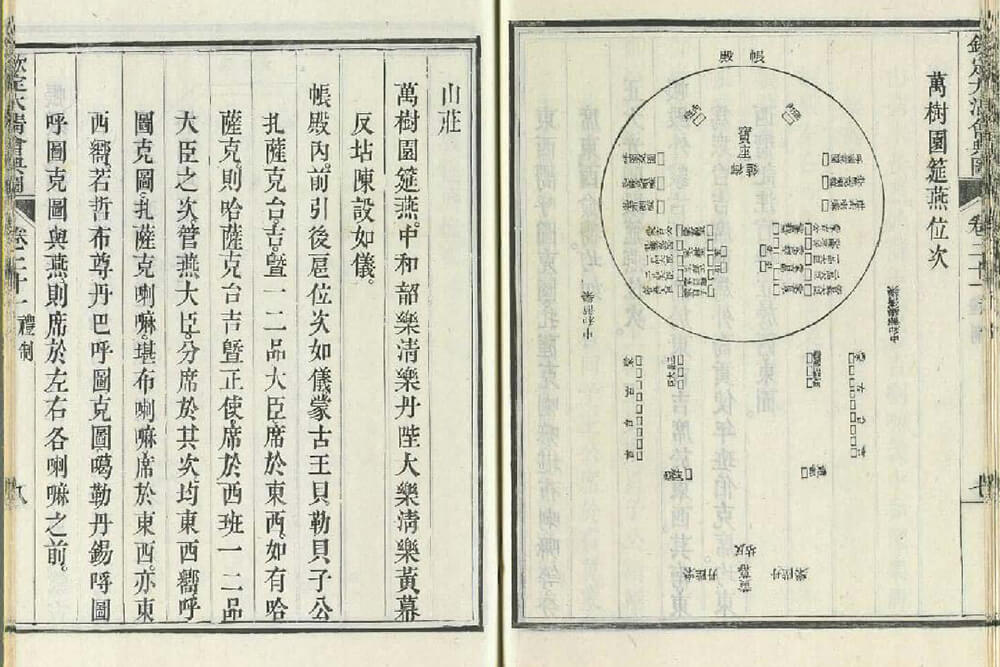Politics and Ritual
In the 42nd year of the Kangxi reign (1703), the Emperor embarked on an inspection tour of the north and celebrated his 50th birthday at the Kharhot Hetun Palace. In the same year, construction began on the Chengde Summer Resort. When the main structure was complete eight years later, the Resort became the Qing emperor's summer residence and a seat of political and military power. Various important events during the Qianlong reign took place here. In 1755, the Emperor invited the high nobility of four Mongol clans to a grand banquet to celebrate the quelling of Dawachi of the Dzungar Khanate. In 1771, Qianlong received Torghut Khan Ubashi, who led his clan on an eastern migration. In 1780, the Emperor received the Sixth Panchen as he traveled from Xigazê in Tibet to celebrate the Emperor's 70th birthday. In 1793, Qianlong received the first envoy from Britain, Lord Macartney. The Eight Outer Temples (Waibamiao) on the outskirts of the Chengde Summer Resort were built one after another while the Qing court sought to pacify the Empire's northern and western frontiers. The temple construction was intended to woo the Mongols and Tibetans and solidify the alliance between the Manchus and Mongols.
Alliance Banquets
During the Qing dynasty, Mongolian princes rarely visited the emperors in Beijing for fear of contracting smallpox. Instead, many Mongolian tribes visited the Summer Resort to attend important alliance banquets because the resort was where the emperors stayed to escape the summer heat and handle government affairs.
Inscription on the Stele of the Temple of Universal Benevolence
- Written by Emperor Shengzu, Qing dynasty
- From fascicle 2 of Wanshou Shengdian Chuji (First Collection of the Imperial Birthday Ceremony)
- Imprint by the Imperial Printing Office at Wuyingdian Hall, 56th year of the Kangxi reign (1717), Qing dynasty
In 1713, when Emperor Kangxi turned 60, Mongolian tribes visited the Summer Resort to congratulate him on his birthday. Because the Mongolians believed in Buddhism, they petitioned for the emperor to grant the building of a Buddhist temple to wish him happy birthday. The temple was completed in the following year, and a stone with inscription, made personally by the emperor, was placed in the temple to commemorate the special occasion.
Inscription on the Stele of the Temple of Universal Peace
- From fascicle 19 of Yuzhiwen Chuji (First Collection of Imperial Literary Works)
- Compiled by Yu Minzhong, on imperial order
- Movable-type imprint by the Imperial Printing Office at Wuyingdian Hall, 59th year of the Qianlong reign (1794), Qing dynasty
In May 1755, Qing court pacified Dawachi, the last Dzungar Khan of Dzungar Khanate, Xinjiang. In October of the same year, Emperor Qianlong held a banquet in the Summer Resort for the high-ranking nobles of four Uuld Mongolia to participate. Because Mongolians believed in the Gelug School (Yellow Hat school) of Tibetan Buddhism, and to commemorate the special occasion, the emperor decreed the building of the Temple of Universal Peace and wrote this inscription. The temple was built by imitating the Samye.
Seating Chart for a Banquet at the Hall of Simplicity and Piety
- From fascicle 21 of Qinding Daqing Huidiantu (Imperially Endorsed Collected Statutes of the Great Qing with Illustrations)
- Written by Tuo Jin, et al., on imperial order
- Imprint by the Imperial Printing Office at Wuyingdian Hall, 18th year of the Jiaqing reign (1813), Qing dynasty
The Hall of Simplicity and Piety was a venue in the Summer Resort where Qing dynasty emperors received princes, ministers, and foreign envoys. Many important ceremonies were also held here. This "Seating Chart for a Banquet at the Hall of Simplicity and Piety" reveals the seating chart of a banquet held in the hall, including where imperial family members, Mongolian princes, and foreign envoys were to sit.
Seating Chart for a Banquet at the Garden of Ten Thousand Trees
- From fascicle 21 of Qinding Daqing Huidiantu (Imperially Endorsed Collected Statutes of the Great Qing with Illustrations)
- Written by Tuo Jin, et al., on imperial order
- Imprint by the Imperial Printing Office at Wuyingdian Hall, 18th year of the Jiaqing reign (1813), Qing dynasty
Beginning in 1752, the Garden of Ten Thousand Trees slowly became a diplomatic venue where the emperor held banquets to receive Mongolian and Tibetan Lamas, foreign princes and nobles, and foreign distinguished guests. This block print shows the spatial arrangement and seating chart of a banquet held at the Garden of Ten Thousand Trees at the turn of the eighteenth and nineteenth centuries. In the picture, a large yurt is erected in the garden. Inside the yurt is the emperor's seat in the center surrounded by retinues in the front and back. Distinguished guests such as Mongolian and Tibetan Lamas, Mongolian princes, Manchu clans, princes, and first- and second-rank ministers sit in the east-west direction. Outside the yurt are court bands in the east, west, and south. Seats for Mongolian Taiji, third-rank ministers, the minister of rites, and Imperial Household Department officials can also be found. Whenever celebrations were organized at the Summer Resort, the Garden of Ten Thousand Trees held feasts spanning several days, allowing the guests and host to fully enjoy themselves and strengthening the friendship between the Qing Empire and its vassal states and foreign countries.
